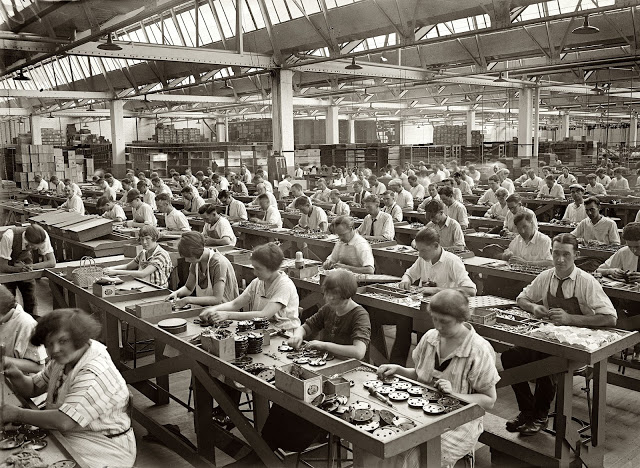Industrialization

After the Civil War, a new era of mass production (mechanized production of a large quantity of a good) arose in the United States because of technological innovations (new ways to solve old problems), a favorable patent (legal right to make, use, or sell a product) system, new forms of factory organization, an abundant (plentiful) supply of natural resources (materials from nature used to produce goods), foreign investment (money used to produce a profit), and a labor force of millions of immigrants from around the world seeking a better way of life. In turn, these immigrants created increased demand for these mass-produced consumer goods. The changes brought about by industrialization and immigration gave rise to the labor movement and to women's organizations that supported industrial reforms.
After Reconstruction, the nation turned its efforts toward economic recovery and expansion. America's rich supply of natural resources, such as coal and oil, encouraged investment, as did a patent system that protected the rights of inventors. Much of this investment came from abroad, from already industrialized countries such as Germany, Great Britain, and France whose entrepreneurs looked for new investment opportunities in the United States. These investors put money into the work of mechanics and engineers who had the expertise (skill) to develop new, more efficient ways of mass-producing consumer goods. New forms of factory organization, which allowed business owners to achieve economies of scale, spread across the nation's industrial areas. These economies of scale benefited the United States by allowing business owners to specialize in the production of goods and manufacture them in large quantities to distribute throughout the nation or export abroad. As a result, the cost of mass-produced goods went down as their quantity and variety (though not necessarily their quality) went up. Industrial profits rose. An expanding system of transcontinental railroads, alongside which a communication network of telegraph and eventually telephone lines went up, encouraged the growth of national markets to distribute these goods. The invention of pressure-sealed cans and refrigeration increased the availability of foodstuffs, thereby improving the quality of life for many of the nation's city dwellers.
Industrial expansion required an ever-growing workforce. American businesses and some Southern planters actively recruited workers from the nation's rural areas, as well as from abroad through advertisements published in foreign languages around the world. Between 1870 and 1920, approximately 26.5 million migrants from Asia, Latin America, and Europe entered all regions of the United States, with the majority settling in the Northeast and the Midwest.
Click to download a PDF copy of Industrialization.
This article is part of the Past/Present Student Materials Packet.




